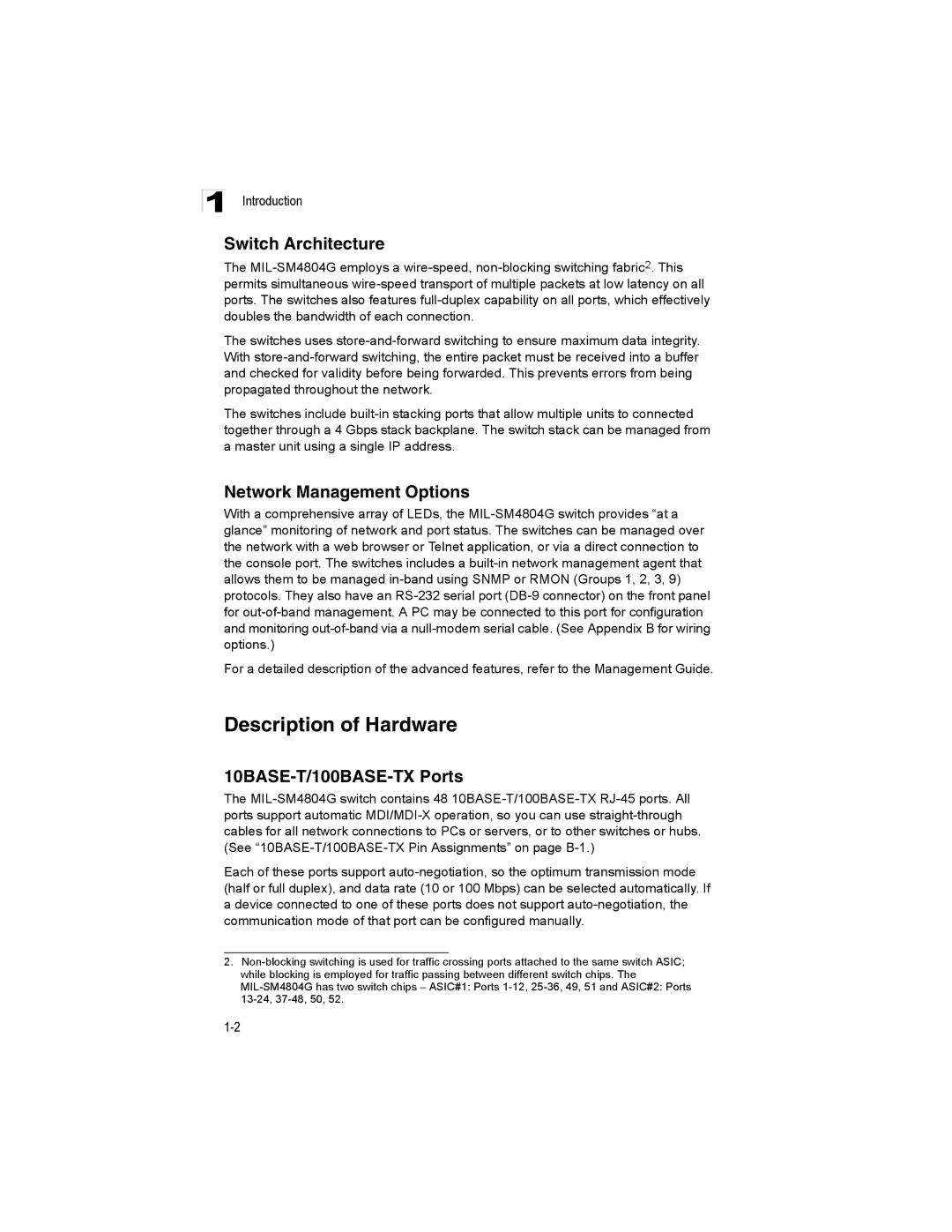1 Introduction
Switch Architecture
The MIL-SM4804G employs a wire-speed, non-blocking switching fabric2. This permits simultaneous wire-speed transport of multiple packets at low latency on all ports. The switches also features full-duplex capability on all ports, which effectively doubles the bandwidth of each connection.
The switches uses store-and-forward switching to ensure maximum data integrity. With store-and-forward switching, the entire packet must be received into a buffer and checked for validity before being forwarded. This prevents errors from being propagated throughout the network.
The switches include built-in stacking ports that allow multiple units to connected together through a 4 Gbps stack backplane. The switch stack can be managed from a master unit using a single IP address.
Network Management Options
With a comprehensive array of LEDs, the MIL-SM4804G switch provides “at a glance” monitoring of network and port status. The switches can be managed over the network with a web browser or Telnet application, or via a direct connection to the console port. The switches includes a built-in network management agent that allows them to be managed in-band using SNMP or RMON (Groups 1, 2, 3, 9) protocols. They also have an RS-232 serial port (DB-9 connector) on the front panel for out-of-band management. A PC may be connected to this port for configuration and monitoring out-of-band via a null-modem serial cable. (See Appendix B for wiring options.)
For a detailed description of the advanced features, refer to the Management Guide.
Description of Hardware
10BASE-T/100BASE-TX Ports
The MIL-SM4804G switch contains 48 10BASE-T/100BASE-TX RJ-45 ports. All ports support automatic MDI/MDI-X operation, so you can use straight-through cables for all network connections to PCs or servers, or to other switches or hubs. (See “10BASE-T/100BASE-TX Pin Assignments” on page B-1.)
Each of these ports support auto-negotiation, so the optimum transmission mode (half or full duplex), and data rate (10 or 100 Mbps) can be selected automatically. If a device connected to one of these ports does not support auto-negotiation, the communication mode of that port can be configured manually.
2.Non-blocking switching is used for traffic crossing ports attached to the same switch ASIC; while blocking is employed for traffic passing between different switch chips. The MIL-SM4804G has two switch chips – ASIC#1: Ports 1-12, 25-36, 49, 51 and ASIC#2: Ports 13-24, 37-48, 50, 52.

